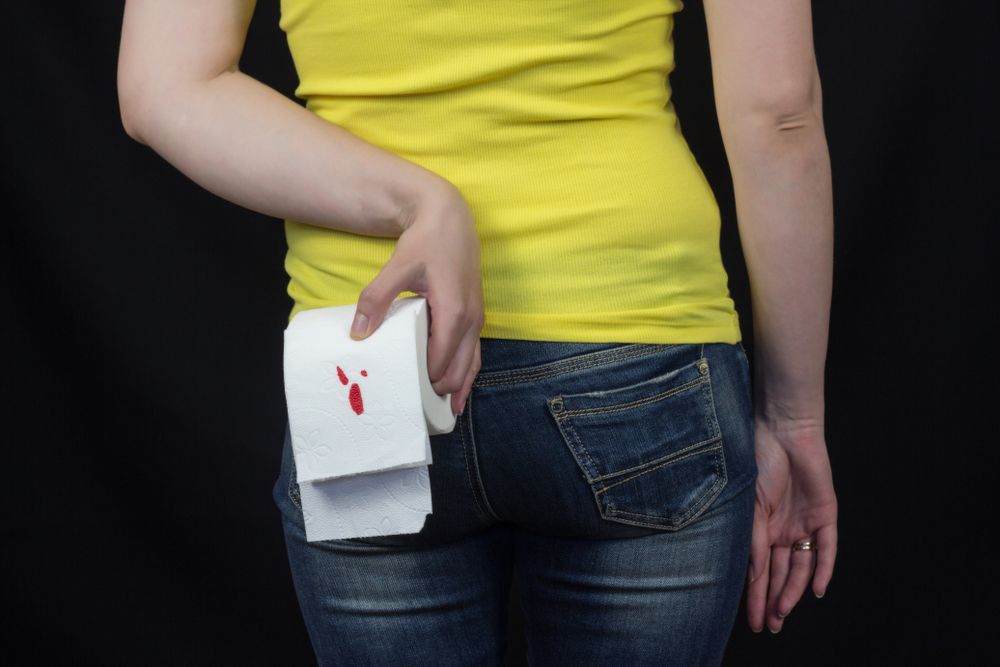An anal fissure also known as bawaseer occurs when there are cuts or tears in the lining of the anus. These cracks can cause severe pain and discomfort. When this cut starts to fill up and the pain and discomfort start to go away, these are the major signs a fissure is healing.
Almost 90% of anal fissures get recovered at home on their own naturally. Although 40% of the long-term anal fissures heal and get better after surgical treatment. If a fissure takes more than 4 to 5 weeks in the healing process, after using all the home remedies ad self-medication, then you need to visit the top gastroenterologist near you.
For a layman, it is very important to know the signs that indicate the healing of a fissure. But first, let’s read some details on fissures.
Table of Contents
Causes of Anal Fissures
Fissures usually occur due to trauma to the inner lining of the anus. To know the signs a fissure is healing it is important to understand first that dry bowel movement and hard stool typically are responsible for causing anal fissures. But what most people do now is that diarrhea and loose stool can also be one of the causes.
The injury that occurred to the tissue caused severe anal pain causing anal sphincter spasms and a subsequent increase in the anal sphincter muscle pressure. Now, this increase in the anal sphincter muscle pressure causes a decrease in the blood flow to the site of the injury that impairs the healing of the fissure.
Acute vs Chronic Anal Fissures
Before getting the answer to ‘signs a fissure is healing’ it must be known that anal fissures can be acute and can show a presence of a simple tear in the anus. On the other hand, chronic anal fissures can have swelling and scar tissue present.
Chronic fissures (lasting more than 8 to 12 weeks) can be way more difficult to be treated and can also have an external lump attached to the tear which is called a skin tag or sentinel pile. With this, extra tissue just inside the anal canal known as hypertrophied papilla can also be present.
A lot of times, anal fissures are misdiagnosed as hemorrhoids. This delay in the right diagnosis turns an acute fissure into a chronic one.
Symptoms and Signs a Fissure is Healing
There are some ways that can be used to treat fissures, but complete healing of a fissure is never promised. Even after the pain is gone and you see no blood, there is no guarantee that the fissure is healed or not. Another thing to keep in mind is the severity of the fissures. However, there are a number of home remedies and ways that can be used as a treatment to get rid of anal fissures.
Short-term anal fissures can be treated by using home remedies such as stool softeners or using Sitz Bath. There are various ways that can be used in order to get rid of anal fissures fast and see the signs a fissure is healing.
Let’s have a look!
Prevent Constipation
The first and foremost thing that needs to be done is the preventive measures that can be taken to avoid constipation. And the most important thing here is to prevent constipation. By doing that you can get out of the vicious cycle of anal fissures. To do that.
- Drink lots of water, as much as you can
- Add fruits and vegetables to your diet. Go for beans, whole grains, fresh fruits, and fiber-rich foods in your diet every day
- Exercise every day to make the blood flow intact in the affected area
- Take laxatives or stool softeners i.e Skilax drops if you need them by discussing them with your doctor to see the signs a fissure is healing
- Go to the washroom when you feel the urge
Try Out Sitz Bath
Sitz Bath is a very relaxing bath that is taken to aid the pain and discomfort that is felt from the anal fissures. You can take it very simply. You just need a tub and have to sit in it for 15 to 20 minutes after every bowel movement.
Dr. Sana Iqbal who works at MD Healthcare Center says that the sitz bath not only soothes the sphincter muscles but also helps in keeping the excruciating pain away. In case the anal fissures start to itch or get swollen, stop taking sitz baths and visit your doctor to see the signs a fissure is healing.
Use Medication and Ointments
Some medicines and ointments can help greatly in curing anal fissures and reducing pain,
1. Anesthetic creams – These prescription ointments can be applied before you take a dump. These work great when there is short-term treatment needed.
2. Steroids – These creams can help in reducing swelling, itching, and pain
3. Stool softeners or laxatives – Anal fissures heal quickly when the stool that you pass is soft. This can be achieved by taking stool softeners and laxatives.
4. Painkillers – Painkillers can be taken as prescribed by the doctors to reduce the pain
5. Botox injection – Botulinum toxin when injected into the anal sphincter temporarily helps in paralyzing the muscles for up to three months. These can help you see signs a fissure is healing.
When to Contact a Doctor
If you have tried the above-mentioned ways and still want an answer to ‘signs a fissure is healing’ and you have severe pain which is followed by bleeding. Experts at the Doctors Hospital say that for a lot of people, home remedies don’t work and they have to look for surgical means in order to treat anal fissures. A number of stool softeners are available in the market, one of which is laxoberon tablet.
Try and avoid the causes that can increase your chances of getting fissures in the first place and choose a healthy lifestyle.
